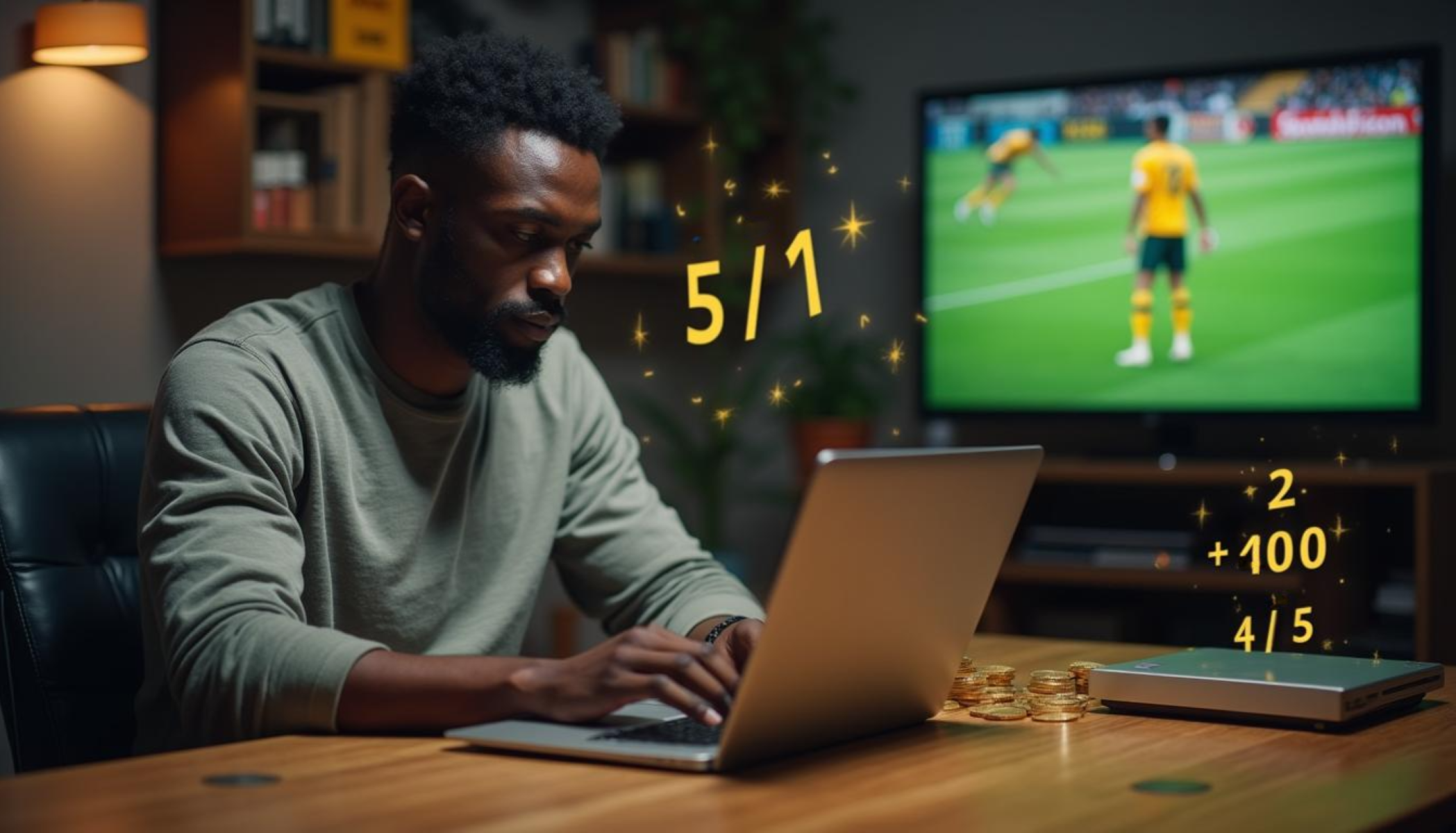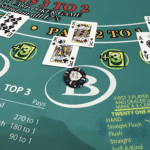When it comes to sports betting, many bettors focus on placing their wagers based on the odds set by bookmakers. But did you know that calculating true odds could be the key to improving your betting strategy? Understanding true odds allows you to assess the value of a bet, identify profitable opportunities, and ultimately make smarter decisions. In this article, we’ll walk you through how to calculate true odds, why they matter, and how you can use them to your advantage when betting on South African sports.
What Are True Odds in Sports Betting
True odds are the actual probabilities of an outcome occurring in a sporting event. Unlike the odds set by bookmakers, which often include a margin for profit (known as the vig or juice), true odds are unbiased and reflect only the real likelihood of an event happening. For instance, when a football team has a 50% chance of winning a match, the true odds would represent this as even money (2.00 in decimal odds). These odds are calculated using objective data, including the team’s past performance, statistical analysis, injury reports, head-to-head records, and more. This process helps to determine what the real chances of an event happening are, rather than the odds skewed by a bookmaker’s desire to make a profit.
The significance of true odds is that they allow bettors to make more informed decisions by spotting “value bets.” Value bets occur when the bookmaker’s odds are higher than the true odds would suggest, meaning the potential payout exceeds what the actual probability should offer. For example, if a bookmaker offers odds of 3.00 on an event with a true probability of 33% (true odds of 2.00), the bet could represent value. By calculating true odds, bettors can avoid blindly accepting bookmaker odds and instead focus on identifying opportunities that are more likely to provide profitable returns in the long run. This is a fundamental skill for serious sports bettors who want to maximize their chances of success.
The Basics of Sports Betting in South Africa
Sports betting has become a widespread and increasingly popular activity in South Africa. The country has a rich sporting culture, with sports like football (soccer), rugby, cricket, and horse racing drawing large crowds and substantial betting volumes. The legal landscape around sports betting is regulated, with various licensing bodies overseeing the activities of bookmakers. South African bettors have a wide selection of licensed bookmakers, both local and international, where they can place bets on various sports events. The growing popularity of sports betting in the country has been further enhanced by the increasing availability of online betting platforms, which provide easy access for bettors from anywhere in the country.
South African bettors typically encounter odds presented in three main formats: decimal, fractional, and moneyline. The most common format used in South Africa is decimal odds, but it’s important for bettors to understand all three types, as they can appear in different markets and platforms. Decoding these odds accurately is critical for making well-informed betting decisions. Understanding betting odds allows bettors to calculate potential winnings, interpret probabilities, and assess the value of each bet they place. Whether betting on a local football match or a major international event, knowing how to read and calculate odds is a vital skill for anyone looking to succeed in the competitive world of sports betting.
Betting Odds
Betting odds are a representation of the potential payout of a bet based on the odds format used by the bookmaker. They help bettors understand the probability of an outcome occurring and how much they stand to win if their bet is successful. There are three main types of odds commonly used in sports betting: decimal, fractional, and moneyline odds.
- Decimal Odds: These are the most popular odds format in South Africa and are easy to understand. Decimal odds show how much you win for every unit you stake. For example, if you place a bet at decimal odds of 2.50, you will receive 2.50 times your stake if the bet wins. So, a R100 bet at 2.50 odds would return R250 (R100 stake + R150 profit).
- Fractional Odds: Common in the UK, fractional odds represent the ratio of profit to stake. For example, 5/1 odds mean you will win five times your stake if the bet is successful. So, a R100 bet at 5/1 odds would return R600 (R100 stake + R500 profit).
- Moneyline Odds: Commonly used in the United States, moneyline odds are expressed as either positive or negative numbers. Positive moneyline odds (e.g., +200) show how much profit you would make on a R100 bet, while negative odds (e.g., -150) show how much you need to stake to win R100. So, a bet with +200 odds means you win R200 for every R100 staked, while a -150 bet means you need to stake R150 to win R100.
Understanding these odds formats helps bettors evaluate and compare different betting opportunities across various bookmakers and platforms.
The Role of Bookmakers in Setting Odds
Bookmakers play a crucial role in sports betting by determining the odds offered to bettors. These odds are based on a variety of factors, including statistical analysis, team performance, and expert predictions. Bookmakers analyze historical data, such as previous match results, player injuries, and team strategies, to estimate the probability of an outcome. However, bookmakers don’t set odds purely based on probability; they also factor in a margin for profit. This margin ensures that, no matter the outcome of the bet, the bookmaker will generate a profit. This built-in margin is known as vig or juice, and it can affect the true value of the odds offered.
For example, if a football match has a 50% chance of a team winning, the true odds would be 2.00 in decimal format. However, a bookmaker may offer odds of 1.90 to account for the vig, meaning the bookmaker will make a profit regardless of the match outcome. Understanding how bookmakers set odds can give bettors an edge in the betting market. By calculating their own true odds and comparing them to the bookmaker’s odds, bettors can identify “value bets,” where the odds offered by the bookmaker are greater than the actual probability of an outcome occurring. This helps bettors make smarter decisions and potentially achieve better long-term profitability.
Why You Should Calculate True Odds
Calculating your own true odds is an essential skill for any serious sports bettor. One of the key reasons to calculate true odds is to identify value bets. Value bets are wagers where the potential return is greater than what the market (or bookmaker) suggests based on their odds. By calculating the true odds yourself, you can better compare them with the bookmaker’s odds. When you spot discrepancies where the bookmaker’s odds offer a higher return than the true probability, you are identifying value that can help increase your long-term profitability. For instance, if you calculate the true odds of a football match and find that the bookmaker’s odds are higher than they should be based on actual probabilities, this is a clear indication of a value bet.
Another critical reason for calculating true odds is to avoid losses. Sportsbooks often set odds that are skewed to ensure they make a profit, which can lead to inflated odds that don’t reflect the actual probability of an event occurring. By relying solely on bookmaker odds, you might be placing bets with little chance of winning, resulting in consistent losses. Calculating true odds allows you to avoid these inflated odds and helps ensure that your bets are based on a more accurate and realistic view of the event’s probabilities. For example, a bookmaker may offer odds of 2.50 on a team that has only a 30% chance of winning, but by calculating the true odds, you can see that the actual odds should be closer to 3.33, which gives you a better idea of whether the bet is worth placing.
Lastly, calculating true odds helps you in making smarter decisions. Sports betting is not just about guessing or relying on luck. By calculating the true odds, you are making decisions based on solid mathematical principles and actual probabilities, rather than being influenced by the bookmaker’s manipulated odds. Using this approach allows you to make informed decisions, evaluate risk, and build a strategy based on the most reliable data available. This disciplined, data-driven approach increases your chances of success in the long run and helps you avoid the pitfalls of blindly trusting the bookmaker’s odds.
The Formula for Calculating True Odds
The process for calculating true odds is straightforward and based on a simple formula:
True Odds = 1 / Probability of Outcome
This formula helps you determine the actual probability of a given outcome in a sporting event. For example, if you believe a football team has a 50% chance of winning, you would calculate the true odds using the following calculation:
True Odds = 1 / 0.50 = 2.00
This means that, based on the true probability, the odds should be 2.00 (in decimal format). If you place a bet of 1 unit, you would receive 2 units back if the bet is successful, which includes your original stake plus your profit.
To break this down further, the true odds are a reflection of the likelihood that an event will occur. In the case above, a 50% probability of a win translates into 2.00 odds. In other words, for every 1 unit you stake, you will win 1 unit as profit if the bet is successful, doubling your original stake. The formula itself is useful because it doesn’t take into account the bookmaker’s margin (vig or juice), which is what you’d find in the odds offered by sportsbooks. The true odds reflect an unbiased representation of the outcome’s probability, which is vital for evaluating bets.
In sports betting, using true odds allows you to assess whether the bookmaker’s odds represent a fair reflection of reality. If the bookmaker’s odds are higher than the true odds, you might be able to spot a value bet, and if they are lower, you can avoid making a bet that has little chance of yielding a profitable outcome. Thus, calculating true odds is a key component of becoming a more effective and strategic bettor.
| Event | Probability of Outcome (%) | True Odds (Calculated) | Bookmaker Odds |
| Team A wins the match | 50% | 1 / 0.50 = 2.00 | 1.90 |
| Team B wins the match | 30% | 1 / 0.30 = 3.33 | 3.00 |
| Draw in the match | 20% | 1 / 0.20 = 5.00 | 4.50 |
The Impact of Vig (Juice) on Odds
Vig (short for vigorish) or juice is the bookmaker’s commission that is factored into the odds to ensure that they make a profit, regardless of the outcome of the event. When calculating true odds, it’s crucial to account for the vig, as it affects the accuracy of the odds. Bookmakers set their odds higher than the true odds to include this commission, which is essentially an extra cost built into the odds. For example, if the true odds for an event are 2.00 (50% chance), the bookmaker might offer odds of 1.90, taking into account the vig. This adjustment means that even if you correctly predict the outcome, your potential returns are lower than they would be if the true odds were used.
To calculate your true odds while considering the vig, you need to first determine the odds without the vig. This involves removing the bookmaker’s commission to get the actual probability of an outcome occurring. Once you have this, you can apply the vig or juice back into your calculation to determine the odds the bookmaker would offer, including their margin. For example, if the true odds for a team winning a match are 2.00, and the bookmaker includes a vig, the odds they offer might be adjusted to 1.90. Being aware of vig helps you adjust your calculations and avoid overestimating the profitability of a bet. It ensures that you are always comparing true odds to bookmaker odds on an even playing field.
Factors That Influence Sports Betting Odds
Several factors influence the odds set by bookmakers, which in turn affect the true odds that bettors should calculate. One major factor is team form. The recent performance of a team, including their winning streaks, losses, and matchups against particular opponents, plays a significant role in determining the odds. Bookmakers take this data into account when setting odds, as teams on a hot streak are often favored to win. Bettors should consider the current form of the teams involved in the event when calculating true odds, as this can significantly impact the likelihood of certain outcomes.
Other important factors that influence sports betting odds include injuries, weather conditions, and public perception. Injuries to key players can dramatically change the dynamics of a team, and bookmakers adjust their odds accordingly. Weather conditions, especially in outdoor sports like football or rugby, can also have a major impact on the outcome of a game. For instance, rainy or windy conditions might make it more difficult for teams to score, which can affect the odds. Additionally, public perception can influence odds, as bookmakers often adjust them based on where the public is placing their bets. If a large number of people bet on a particular outcome, bookmakers may adjust the odds to balance the action and reduce their risk. Understanding these factors helps bettors calculate more accurate true odds by considering all aspects that may influence the outcome of a sporting event.



